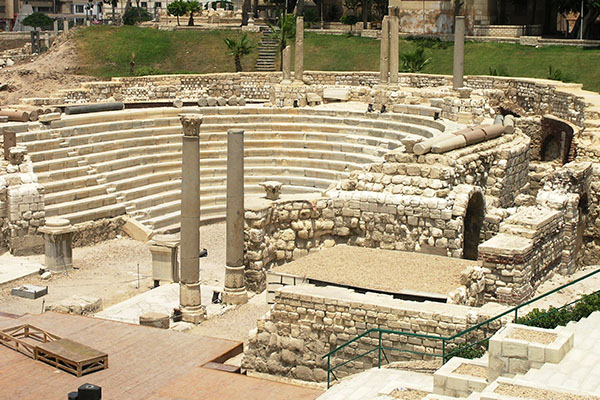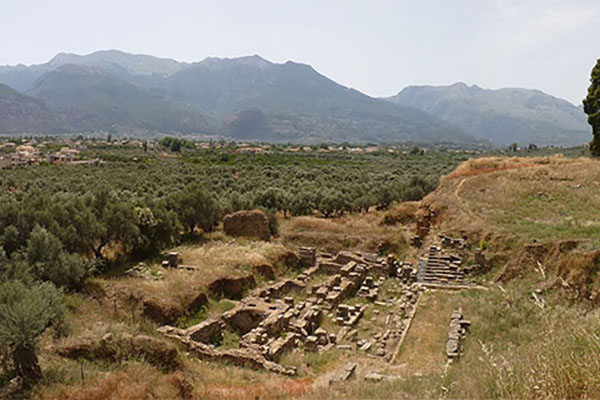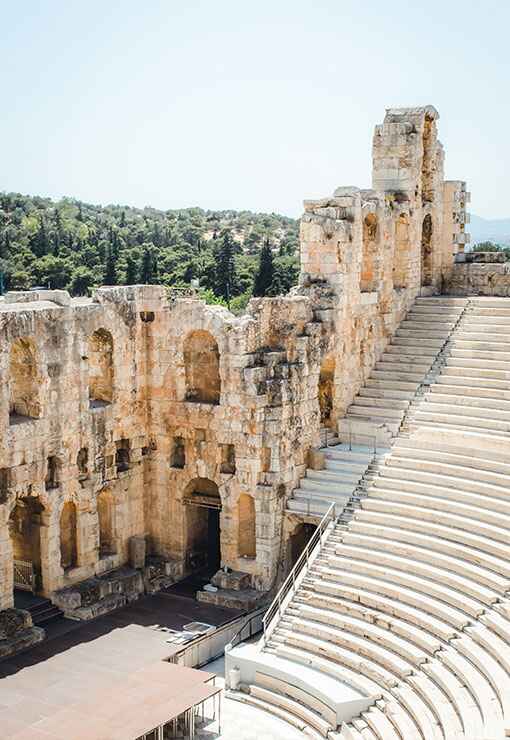

The Temple of Hephaestus, located in the Ancient Agora of Athens, is one of the best-preserved ancient Greek temples. Dedicated to Hephaestus, the god of fire, metalworking, and craftsmanship, it stands as a magnificent example of Doric architecture and artistic expression.
Architectural Splendor:The Temple of Hephaestus was built in the 5th century BCE and designed by the architect Iktinos, who also worked on the Parthenon. It features a peripteral design with six columns on the short sides and thirteen on the long sides, adorned with intricate carvings and reliefs.
Metopes and Friezes: The temple's metopes depict scenes from Greek mythology, including the labors of Heracles and the battle between Theseus and the Minotaur. The friezes celebrate the achievements of Hephaestus and other Olympian gods, showcasing their power and influence.
Porch of the Caryatids: The Temple of Hephaestus is renowned for its elegant Porch of the Caryatids, featuring six sculpted female figures serving as columns. These Caryatids, each with a unique pose and expression, exemplify the grace and beauty of classical Greek art.
Religious Significance:Honoring Hephaestus: The Temple of Hephaestus served as a place of worship and veneration for Hephaestus, the patron god of craftsmen and artisans. It housed a cult statue of Hephaestus, where devotees offered prayers and sacrifices in hopes of divine favor and protection.
Industrial Hub: Hephaestus was also associated with metallurgy, blacksmithing, and the forging of weapons and tools. The temple's location near the Agora, the civic and commercial center of Athens, symbolized the importance of craftsmanship and commerce in Athenian society.
Artistic Inspiration: The Temple of Hephaestus, with its harmonious proportions and refined ornamentation, has inspired artists, architects, and scholars for centuries. Its timeless beauty and historical significance continue to captivate visitors from around the world.
Historical Legacy:Byzantine Conversion: In the Byzantine period, the Temple of Hephaestus was converted into a Christian church dedicated to Saint George. This conversion helped preserve the temple's structure and protected it from neglect and destruction.
Archaeological Excavations: In the 19th and 20th centuries, archaeological excavations revealed the Temple of Hephaestus in remarkably good condition. These discoveries shed light on ancient Greek religious practices, architectural techniques, and artistic achievements.
Modern Preservation: Today, the Temple of Hephaestus is a UNESCO World Heritage Site and a symbol of Greece's cultural heritage. Ongoing conservation efforts ensure its continued survival for future generations to appreciate and admire.
Enduring Beauty:The Temple of Hephaestus, with its majestic columns, intricate carvings, and timeless elegance, stands as a testament to ancient Greek craftsmanship and artistic genius. Its enduring beauty and historical significance make it a must-visit destination for anyone interested in the legacy of classical Greece.
| Location | 37.9746° N, 23.7212° E |
|---|

Did you know? The Temple of Hephaestus is one of the few ancient Greek temples to survive almost intact to the present day.

Celebrated in legend and history, the ancient city of Troy is a timeless symbol of epic tales and archaeological intrigue.
Discover
Explore the ancient allure of Alexandria, once a beacon of knowledge and culture in the ancient world.
Discover
Discover the legendary city of Sparta, renowned for its fierce warriors and unique societal structure.
Discover
Discover the vibrant heartbeat of Greece in the historic city of Athens, home to iconic landmarks like the Acropolis.
DiscoverAncient Greek art and architecture, with its harmonious proportions and timeless elegance, continue to inspire awe and admiration millennia later.
Discover
Greek mythology, a rich tapestry of gods, heroes, and mythical creatures, captivates the imagination with its tales of love, betrayal, and epic adventures that delve into the depths of the human psyche.
Discover
Ancient Greek history, marked by remarkable achievements in democracy, philosophy, and warfare, shaped the foundation of Western civilization, leaving an indelible legacy of innovation and cultural influence that continues to resonate to this day.
Discover
The ancient Greek Olympics, held in Olympia every four years, celebrated athleticism, unity, and cultural pride, serving as a testament to the enduring spirit of competition and excellence that transcends time and borders.
Discover
Ancient Greek wars, such as the Persian Wars and the Peloponnesian War, were pivotal conflicts that shaped the course of history, highlighting the struggle for power, independence, and the clash of civilizations in the ancient Mediterranean world.
Discover
Ancient Greek culture and society, characterized by its emphasis on art, philosophy, and civic engagement, fostered a vibrant intellectual and social landscape where innovation flourished, democracy thrived, and the pursuit of knowledge and excellence was celebrated as fundamental values of civilized life.
Discover
Find out more about ancientgreece.com